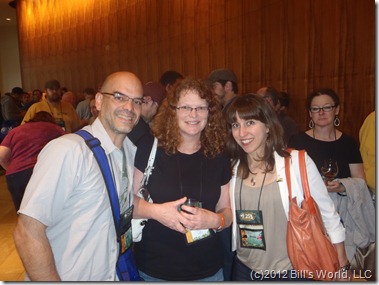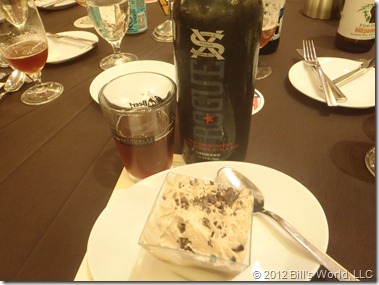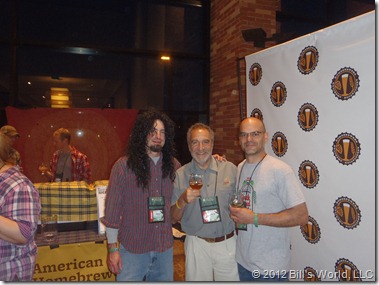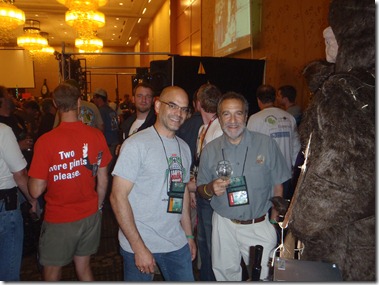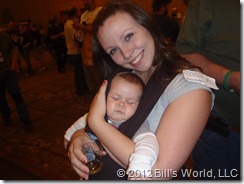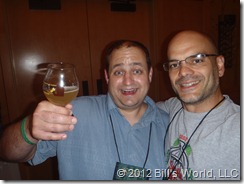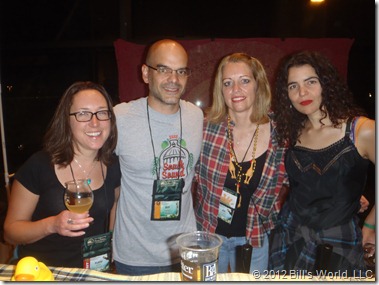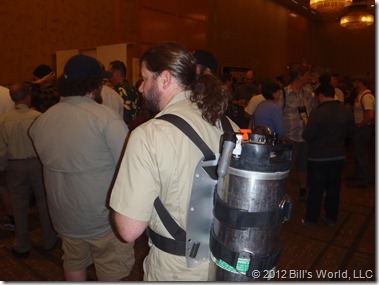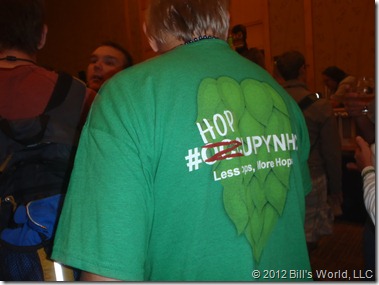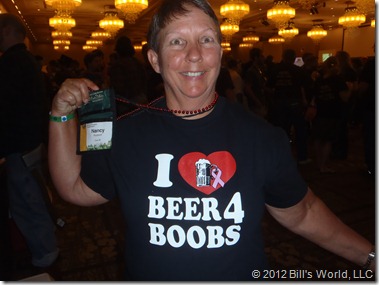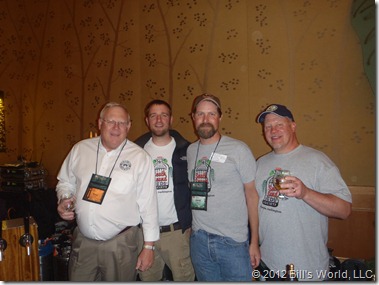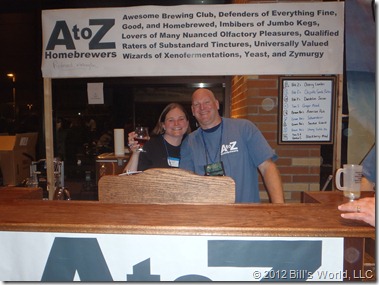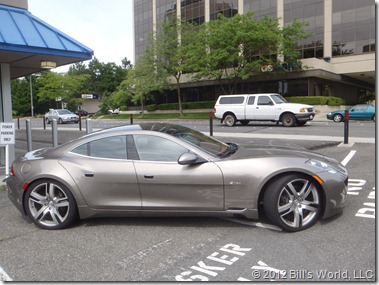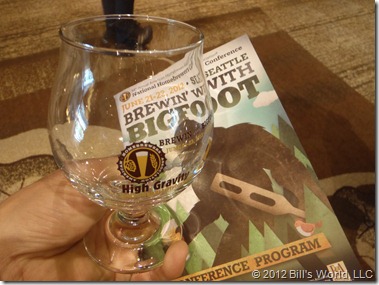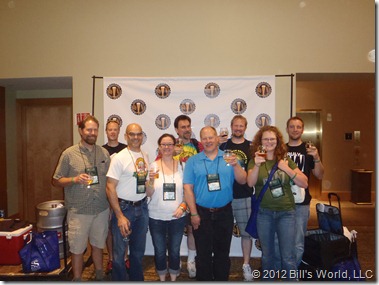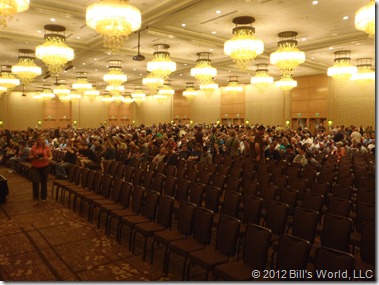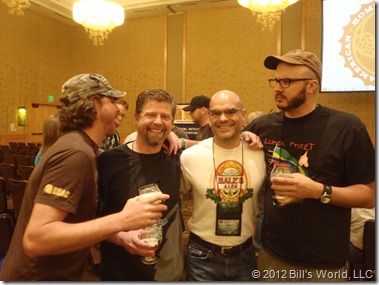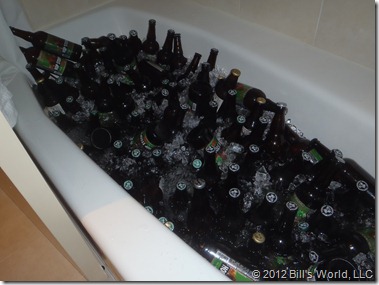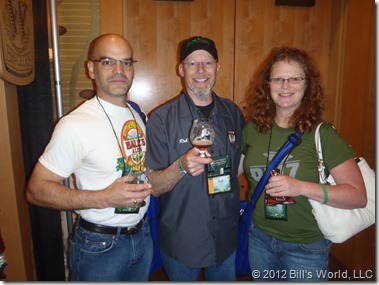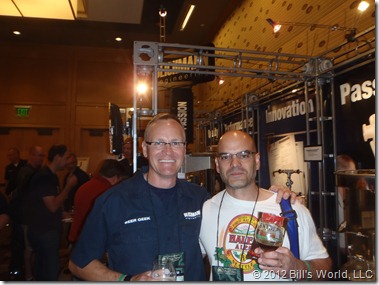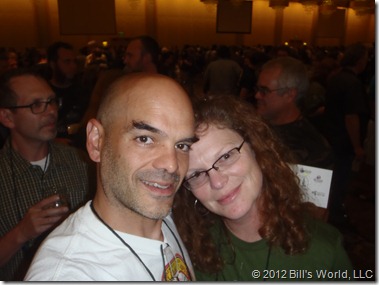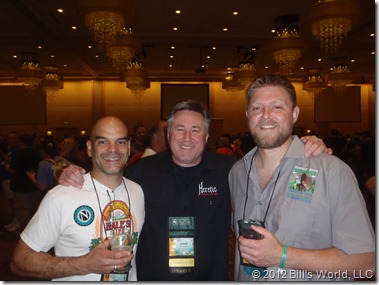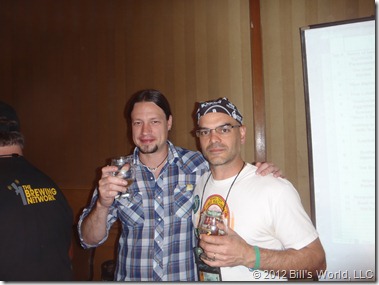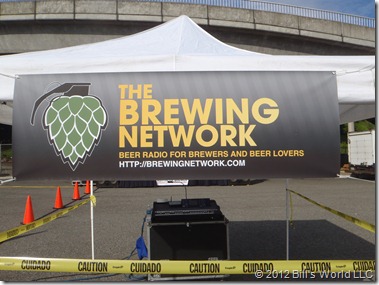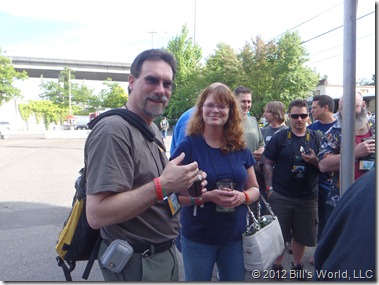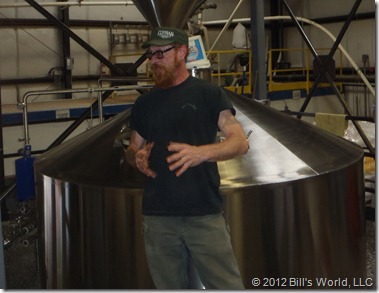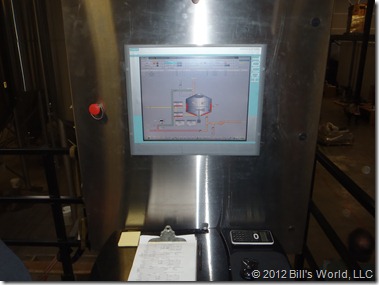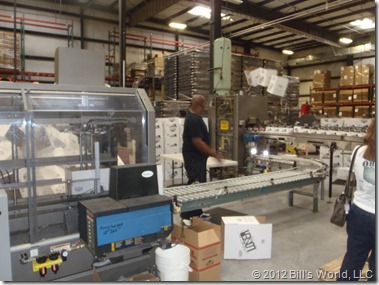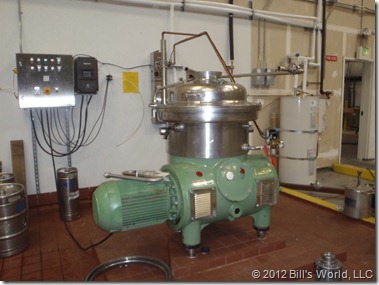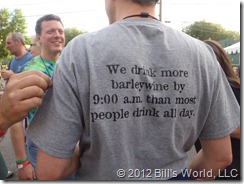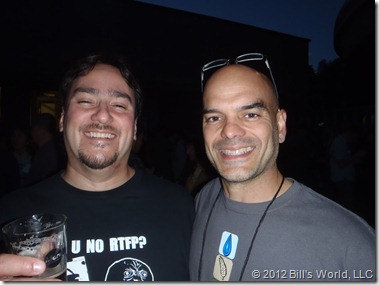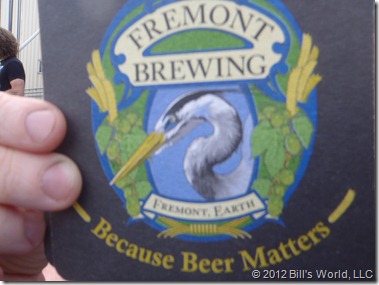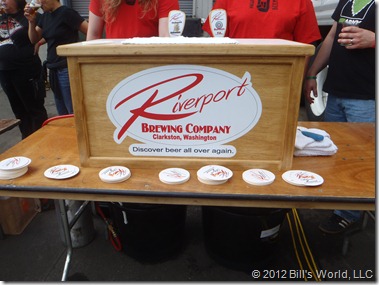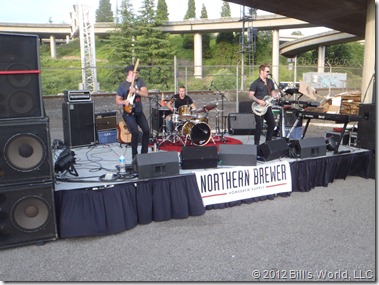The Seminars
Day Three was more about satisfying my inner beer geek than about socializing. The first seminar we attended was given by Neva Parker from White Labs and was titled “Fermentation Mythbusters”. Neva looks like 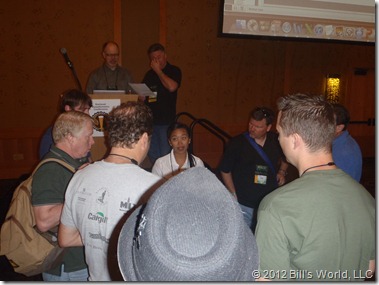 she’s in high school, but the perception is completely dismissed when she begins speaking. She’s a director at White Labs, and she knew her yeast. She had a great format for her talk with an introductory pop quiz, which set the tone for what would be a very educational seminar. Asking the audience to answer about ten questions as true/false, she then went into each question, dissecting the myths associated with it. “If my yeast is clumpy, it’s bad.” (False) “If I leave my yeast at room temperature in the vial, it will die.” (It depends.)
she’s in high school, but the perception is completely dismissed when she begins speaking. She’s a director at White Labs, and she knew her yeast. She had a great format for her talk with an introductory pop quiz, which set the tone for what would be a very educational seminar. Asking the audience to answer about ten questions as true/false, she then went into each question, dissecting the myths associated with it. “If my yeast is clumpy, it’s bad.” (False) “If I leave my yeast at room temperature in the vial, it will die.” (It depends.)
Then there was the Q&A from the audience, everything from something relatively easy like, “If I add my starter to a wort that’s warmer/cooler, will it shock the yeast?” to something like, “What are the boundary mechanisms that effect my finished beer and how if I ferment in a conical versus a carboy?” Neva demonstrated an astounding breadth and depth of knowledge. I can hardly wait for the AHA to post her presentation.

Probably one of the most interesting components of Ray’s seminar was his brief overview of a multi-dimensional approach to classifying hop flavors. Most brewers are familiar with terms like spicy, floral, citrusy, and earthy to describe hop flavors. Putting those four dimensions on a single graph, and putting a dot on each axis for the intensity of the flavor, you could draw lines to get a “spider diagram” of the hop profile. The Barth-Haas group out of Germany has done something like this with about twelve different hop flavors. They’ve published a whole book of as many hop varieties as they could source, and tried to characterize both wet and dry versions of them using this multi-dimensional spider diagram approach. Sound a bit dry? To the contrary, it was quite fascinating.
The third seminar we attended was given by Nicole Erny—the first woman Master Cicerone—titled, “Focus on Flavor”. Another enthralling personality who demonstrated a mastery in both breadth and depth of her subject matter, Nicole walked the room through how she became a Master Cicerone. In addition to providing a whole new set of flavor vocabulary, she provided me news ways of thinking about flavor as a beer judge. One of my favorite quotes of Nicole’s was, “If a flavor is worth describing, it’s worth describing its intensity.” To demonstrate some of the variety we could use as beer judges in describing chocolate, she passed out cacao nibs, Hershey’s Kisses, Tootsie Rolls, and dark chocolate cooking chocolate discs for us to compare. Then she put a list of chocolate descriptors up on the screen; another fascinating set of tools for the homebrewer or judge.
Nicole’s talk was interesting in more than just the practical approach she took in teaching herself about flavors. She has some very natural teaching abilities, and it made the class that much more interesting. Her ability to describe the physiological connections between flavor and parts of the brain. She gave us all a great excuse to keep drinking homebrew and craftbeer when she told us that practicing our flavor sensing abilities was developing neurological connections in our brains. And who wouldn’t want to encourage brain development by drinking beer?
The last seminar we attended I won’t bore you with. The talk about homebrewing lagers was delivered by a local brewer who seemed much too nervous in front of a crowd to have been tasked with the challenge. His speaking was so engaging I may have dozed once or twice. May have.
The Hospitality Suite
During various breaks throughout NHC, homebrew clubs host a hospitality suite. The last day’s suite session gave us access to some very interesting beers. One of the north Puget Sound clubs made several “Harry Potter Brews” with names like, “Harry Potter’s Golden Snitch” (saffron and dill), “Polyjuice Pale” (a pale with tart cherry and brewed with a hair from Charlie Papazian’s head), “The Fiery Redhead” (a cream ale made with Red Hots and Cinnamon Jolly Ranchers), and “Severus Holdscipes Potion” (a dark English mild with black pepper), the group paid a great homage to the franchise. As a beer judge, I try to maintain constructive feedback when reviewing beers. Instead of individual reviews, let me generalize and say these were interesting recipes.
The Banquet
Having been to a really phenomenal beer and food pairing dinner just five nights prior (read more here), it’s hard to be fair to the banquet’s offerings. My picture of the menu is really poor quality, so I’ll just type here what was on it:
Reception Beer
Chatoe Rogue Single Malt Ale
First Course
Wild Mushroom Ale Bisque
Rogue Ales Mocha Porter
Second Course
Pacific Northwest Salmon on a Root Vegetable Mash with an Orange Hazelnut Parsley Gremolata
Chatoe Rogue OREgasmic Ale
Third Course
Coffee and Doughnut
Rogue Ales XS Old Barleywine
The menu was the work of Sean Z. Paxton, aka The Homebrew Chef, and you can see more of his work at www.homebrewchef.com. My favorites were mushroom bisque/porter p and the coffee and doughnut/barleywine pairing. While good, none of the dishes nor pairings were truly outstanding. The bisque could be improved with actual mushroom pieces in the soup and, of course, more bacon. The dessert stood out in comparison to the other dishes. The caramel was the perfect consistency and the whipped cream was not too sweet, as can sometimes happen. Topping the creation with raw cacao nibs was a great idea for the texture and additional coffee and chocolate flavors they provided.
As with my last pairing experience, I found the company to greatly improve the dining experience. We were able to sit with fellow South Sound Suds Society members Karinn and Ken Reister, and brothers, Matt and Clay Hanson. We got to meet a couple of brewers from Eugene, which Beth lovingly refers to as “the Oregon’s Olympia.” With a backdrop of National Homebrew Competition awards, and the good news that Facebook friend, Aaron Smith took a silver medal with his Classic American Pilsner entry, the conference was a huge success, and we were extremely grateful to attend.
I hope you’ve enjoyed reading my recaps of each day. Stay tuned for more from Bill’s World.
